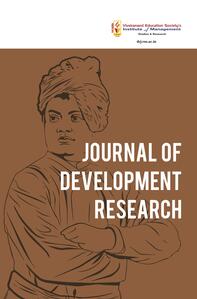
1Indian Institute of Information Technology Allahabad, Allahabad, Uttar Pradesh, India

Creative Commons Non Commercial CC BY-NC: This article is distributed under the terms of the Creative Commons Attribution-NonCommercial 4.0 License (http://www.creativecommons.org/licenses/by-nc/4.0/) which permits non-Commercial use, reproduction and distribution of the work without further permission provided the original work is attributed.
India’s organic food industry is assured of significant growth, driven by the rich agricultural heritage and increasing consumer demand for healthier and sustainable food options. This provides a comprehensive analysis of the Indian organic food sector, focusing on its financial potential to penetrate global markets. The research examines key factors such as sustainability benefits and market dynamics shaping the industry’s trajectory. It offers recommendations for stakeholders aiming to harness India’s full potential to reach the global organic food market. Through strategic investments and initiatives, India can position itself as a leader in organic products, contributing to both economic growth and sustainable agricultural practices. The Indian organic food industry has emerged as a significant player in the global market, fuelled by growing consumer awareness and preferences for healthier and sustainable food options. This article gives a comprehensive analysis of the financial potential of the Indian organic food industry to penetrate and thrive in global markets. The findings of this study provide valuable insights, offering a roadmap for harnessing the financial potential of the Indian organic food industry to achieve sustainable growth and global competitiveness.
Consumer behaviour, health, organic food, organic food products, sustainable
Introduction
The organic industry in India is in the early stages of its life cycle. The industry can be characterised as innovative. In most of the commodities (such as sugarcane in UP, basmati rice in Haryana, Maharashtra and Madhya Pradesh, pulses in Madhya Pradesh, Rajasthan and Uttar Pradesh, cotton in Gujarat, citrus in Maharashtra and Orissa, mango pulp in Gujarat and Maharashtra), it is just beginning to emerge. At the same time, there are a few success stories to be found. For rice and sugarcane farmers in the hilly terrain of Uttaranchal, the switch to organic has been a life-changing experience; they have been able to return to traditional methods of farming without chemicals and yet increase their levels of production. Constraints apply a brake on the market growth. Price has been a dominant issue from the consumer’s perspective. The new system of certification is still causing some confusion and concern for different agencies and trade organisations. With further improvements in the implementation and standard of certification, we should see a greater level of assurance and integrity for consumers of organic products. Internal constraints within the industry also limit the potential at this stage. Due to poor infrastructure, systems of production are often isolated with little information and resource exchange between farmers. Improvement of this knowledge base and assistance for the change in infrastructure will facilitate an increase in production and quality of product. With the current upward trends, we can see that organic is a viable option for the future industry of all commodities. Globally, a predicted steep rise in the market of organic products provides an attractive environment for export. With greater levels of support, we could see India one day providing organic products for all over the world. The term ‘organic’ refers to the way agricultural food products are grown and processed. Organic food is recognised as a safer and healthier option and is only achieved by avoiding the use of artificial pesticides, fertilisers, and preservation. With growing health consciousness and willingness to pay a premium for healthier food, development in the organic agricultural sector is becoming an increasingly important factor in economic policy. India, with its well-diversified agro-climatic conditions, is potentially capable of being self-sufficient in food production provided its resources are utilised optimally. In order to meet the food requirements of the growing population, production and productivity of several crops need to be enhanced. The export of organic foods from India has registered a substantial increase, as the country has a unique position, nearly 15% of the land is certified organic, and it is also the world’s largest producer of organic farming. The export of organic products is expected to grow at a rate of 50%–100% in the coming years. The farming community is of the strong opinion that the organic food products business will bring a lot of cheer to the farming community, who are currently facing a livelihood crisis due to falling prices of Agri-commodities.
Objectives
Problem Statement
India, being one of the largest agricultural countries, the organic products have not been in the bigger picture in the International Market as of now, so in order to assess the potential of it with respect to consumer preferences, it is important to study the aspect of organic food acceptance in Indians.
Literature Review
The literature of various research articles examines different aspects of India’s organic food industry.
Methodology
The consumer preferences regarding the Indian organic food industry utilising the Fishbein model are used to gain insights into consumer attitudes and predict potential purchase behaviour (Figure 1).
Figure 1. Fishbein Model.

Attitude or Intention = Σ (Belief × Importance)
Survey Data
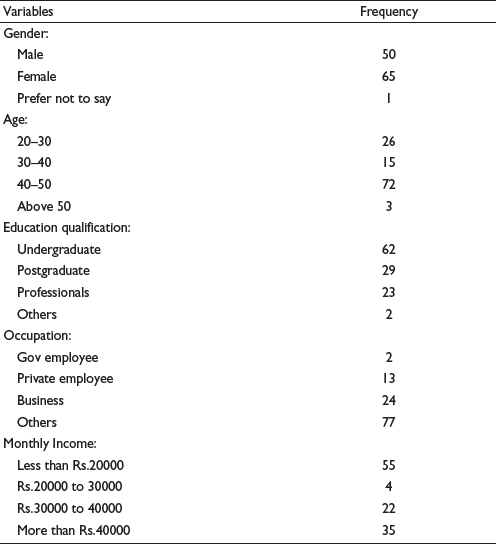
Graphical Representation of the Data (Refer to Appendix For the Questions)
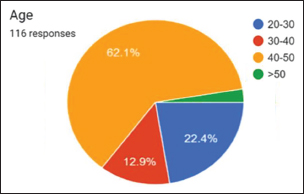

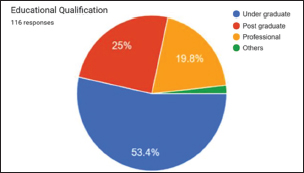
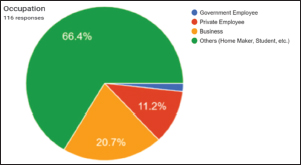
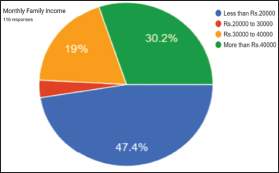
Health Beliefs (Refer to Table 1):
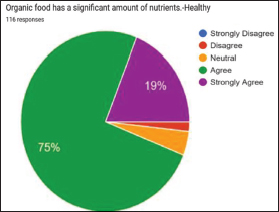
Environmental Beliefs (Refer to Table 1):
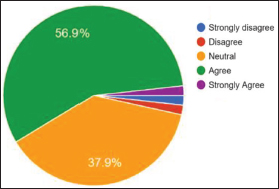
Availability Beliefs (Refer to Table 1):
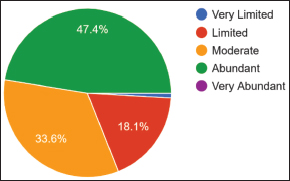
Variety Beliefs (Refer to Table 1):
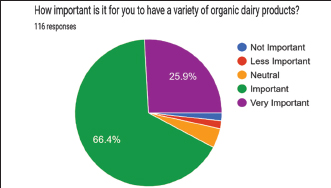
Certification Beliefs (Refer to Table 1):
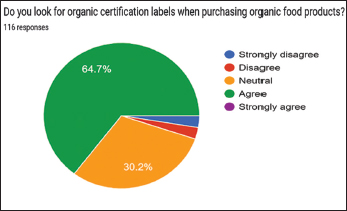
Analysis
The majority strongly agree that there is a significant availability of organic food products in their area. Most respondents find it important or very important to have a variety of organic dairy products. The majority agree or are neutral about looking for organic certification labels when purchasing organic food products. There’s a relatively equal split between finding a variety of organic dairy products important and very important. Most respondents either agree or are neutral about looking for organic certification labels when purchasing organic food products. This analysis provides insights into respondents’ perceptions and preferences regarding organic food availability, the importance of organic dairy product variety, and their behaviour regarding organic certification labels.
The majority strongly agree that there is a significant availability of organic food products in their area. Relatively equal split between finding it important and very important to have a variety of organic dairy products. Majority either agree or are neutral about looking for organic certification labels when purchasing organic food products. The table provides a clear overview of respondents’ perceptions, preferences, and behaviours regarding organic food availability, the importance of organic dairy product variety, and looking for organic certification labels.
Table 1. Numerical Statistics of Survey.
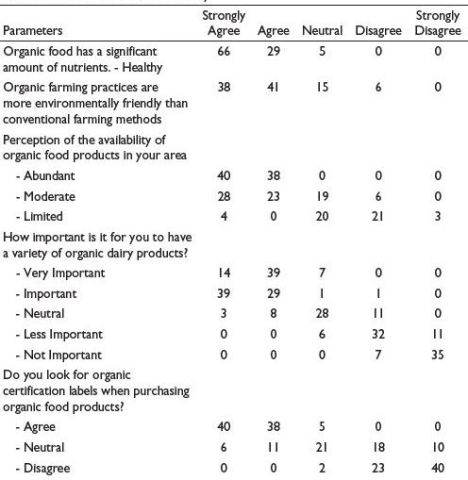
Factor Analysis
Factor analysis is a statistical technique used to identify underlying factors or dimensions that explain the correlations among a set of variables as shown in Table 2. In the context of analysing the Indian organic food industry and its potential to reach the global market, factor analysis can provide valuable insights into the key factors driving the industry’s growth, consumer preferences, market dynamics, and other relevant aspects.
The process of factor analysis typically involves the following steps:
Factor analysis offers a robust analytical framework for understanding the complex dynamics of the Indian organic food industry and identifying the key factors shaping its potential to succeed in the global marketplace. By systematically analysing the interrelationships (refer Figure 2) among various industry variables, factor analysis enables industry stakeholders to gain valuable insights into the industry’s strengths, weaknesses, opportunities, and threats, and develop informed strategies to drive sustainable growth and competitive advantage.
Cluster Analysis
Cluster analysis is a powerful statistical technique used to identify groups, or clusters, within a dataset based on the similarity of observations. In the context of the Indian organic food industry analysis and its potential to reach the global market, cluster analysis can provide valuable insights into various aspects such as market segmentation, consumer preferences, and industry trends.
The process of cluster analysis involves several key steps:
Figure 2. Factor Analysis Data.
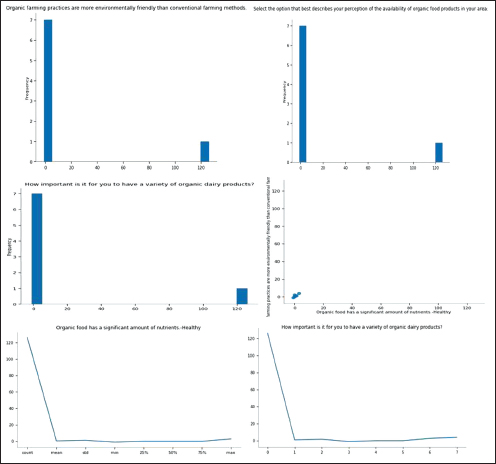
Table 2. Factor Analysis Numerical Data.
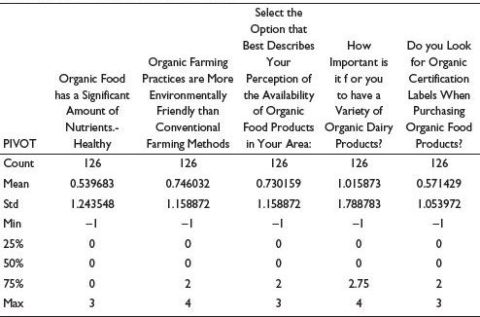
Table 3. Factor Analysis Data.
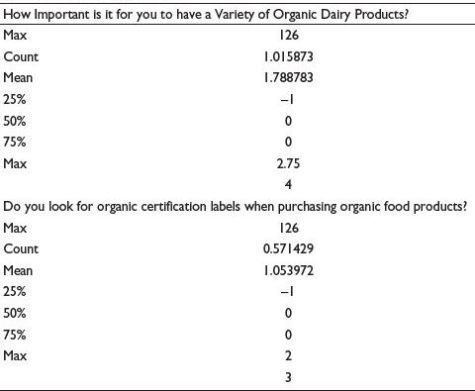
Cluster analysis offers a valuable approach for understanding the complexity of the Indian organic food industry and uncovering opportunities for growth and competitiveness in the global market.
Output
Text: Organic food has a significant amount of nutrients. Healthy. | Sentiment: Positive
Text: Organic farming practices are more environmentally friendly than conventional farming methods. | Sentiment: Positive Text: Organic food products availability in my area is abundant. | Sentiment: Neutral
Text: Variety of organic dairy products is important to me. | Sentiment: Positive
Text: I always look for organic certification labels when purchasing organic food products. | Sentiment: Neutral
Descriptive Analysis (Refer to Table 4 for a Particular View of Details)
The findings suggest a generally positive perception and preference for organic food among the surveyed individuals, emphasising the importance of health, EB, and product certification in their decision-making process when it comes to organic food consumption.
Table 4. Descriptive Analysis.
Perception of Organic Food Attributes
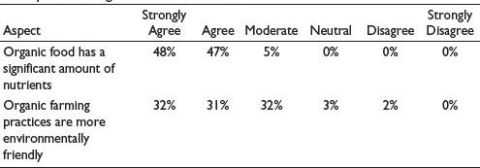
Perception of Organic Food Availability

Importance of Organic Dairy Product Variety

Preference for Organic Certification Labels

Results
Attitude or Intention = Σ (Belief × Importance)
Table 5. Fishbein Model Calculation.

Graphical Representation of the Analysis
Belief (Overall):
Figure 3. Belief (Fishbein Analysis).
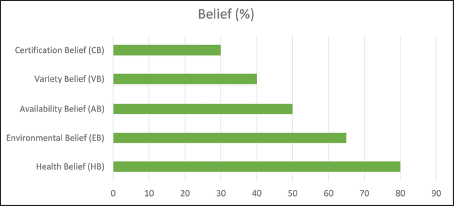
Importance:
Figure 4. Importance (Fishbein Analysis).
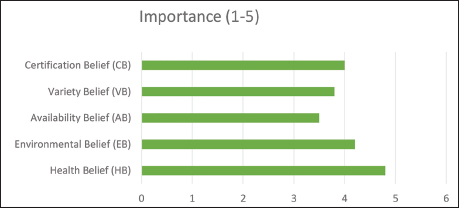
Intention Score (Attitude):
Figure 5. Intention Score (Fishbein Analysis).
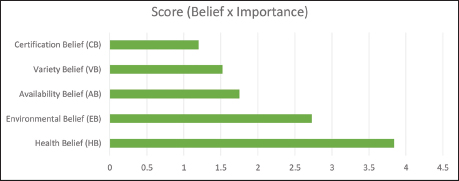
Fishbein score across all respondents was 11.04 (refer to Table 4 for the calculation).
Interpretation
There’s a shift in the Indian food scene, people are increasingly drawn to organic food, with health and environmental benefits topping the reasons why (as shown in Figure 3, Figure 4 and Figure 5). This presents a golden opportunity for the industry to take root not just in India, but globally also.
Growth Drivers
Exploding population middle-class with rising spending power is fuelling the demand for premium options like organic food.
More and more people are actively seeking organic options, believing they offer a healthier choice.
Rapid urbanisation is creating a need for convenient and healthy food, often leading to organic picks.
Heightened awareness about food safety issues is pushing consumers towards organic food, perceived as a safer alternative.
Challenges to Address
Organic food often carries a premium price tag, limiting accessibility for a large portion of the population.
Limited awareness, especially in rural areas, hinders understanding and appreciation of organic food’s benefits.
How Research can Show Positive Effects
Expanding distribution channels and streamlining supply chains can ensure organic products are readily available.
Pricing strategies that make organic food more accessible to a broader consumer base are crucial.
Transparency in labelling, robust certification processes, and quality assurance measures are essential for fostering consumer confidence.
Targeted marketing and awareness campaigns can educate consumers about the health and environmental benefits of organic food choices. Collaboration with government agencies, industry associations, and international organisations can promote the development and implementation of standards for organic food production and trade. Consumers want organic, but affordability, awareness, and trust need to be addressed. By taking strategic action, the Indian organic food industry can not only cater to a growing domestic demand but also emerge as a significant player in the international market.
Conclusion
India’s organic food market presents a landscape of promising opportunities alongside significant challenges. Despite facing barriers such as availability constraints and certification concerns, the country’s positive consumer attitude towards organic food remains a key driving force. With an expanding middle class embracing healthier lifestyle choices and an increasing awareness of EB, the demand for organic products is on the rise. However, several challenges persist, including the affordability gap that restricts access to organic food for many consumers, particularly those in rural areas. Limited awareness and understanding of the benefits of organic food further exacerbate this issue, highlighting the need for targeted education and outreach efforts. Moving forward, addressing these challenges will be essential for unlocking the full potential of India’s organic food market. By making organic products more accessible and affordable, while simultaneously raising awareness about their health and environmental benefits, stakeholders can capitalise on the growing consumer demand and drive sustainable growth in the organic food sector.
In the future, this research will help in coping up the specific challenges and opportunities that organic agriculture encounters in various regions and climates of India, as well as undertaking more comparative studies between organic and conventional agricultural methods. This will facilitate a more comprehensive comprehension of the potential advantages and disadvantages of transitioning to organic farming in India, as well as the economic and social factors that influence the acceptability and efficacy of such methods.
The Indian food landscape is undergoing a profound transformation, as organic food gains momentum, driven by a growing awareness of its health and environmental benefits. This paradigm shift not only presents a lucrative opportunity for the industry within India but also holds potential for global expansion. Health-conscious consumers are actively opting for organic alternatives, believing them to be a healthier option. Rapid urbanisation is fostering a need for convenient and nutritious food choices, often leading consumers towards organic selections. Heightened concerns regarding food safety are steering consumers towards organic produce, perceived as a safer choice amidst growing food safety issues. The premium price associated with organic food often renders it inaccessible to a significant portion of the population. Limited awareness, particularly in rural areas, poses a barrier to understanding and appreciating the benefits of organic food. By addressing these challenges and capitalising on the identified growth drivers, the organic food industry in India can not only thrive domestically but also emerge as a formidable player on the global stage, catering to an increasingly health-conscious and environmentally aware consumer base.
Limitations
Recommendations
Future Research
Segmentation can be carried out in vast scope, future research could delve deeper into consumer preferences within specific demographic segments, geographic regions, or product categories. Launching targeted awareness campaigns, collaborating with educational institutions, and leveraging media outreach can effectively educate consumers about the benefits of organic food. By leveraging its vast agricultural resources, India has the potential to become a global leader in the organic food industry. By implementing strategic measures to address affordability and awareness challenges, India can unlock its true organic potential and contribute to a healthier and more sustainable future for the global food market.
Appendix A
Questionnaire
1. Age
20–30
30–40
40–50
>50
2. Gender
Female
Male
Prefer not to say
3. Educational Qualification
Under graduate
Post graduate
Professional
Others
4. Occupation
Government Employee
Private Employee
Business
Others (Home Maker, Student, etc.)
5. Monthly Family Income
Less than Rs.2000
Rs.20000 to 30000
Rs.30000 to 40000
More than Rs.40000
On the scale from Strongly Agree to Strongly Disagree:
6. Organic food has a significant amount of nutrients. (Health Beliefs)
7. Organic farming practices are more environmentally friendly than conventional farming methods. (Environmental Belief)
8. Select the option that best describes your perception of the availability of organic food products in your area. (Availability Belief)
9. How important is it for you to have a variety of organic dairy products? (Variety Belief)
10. Do you look for organic certification labels when purchasing organic food products? (Certification Belief)
Appendix B
Proof of Acceptance:
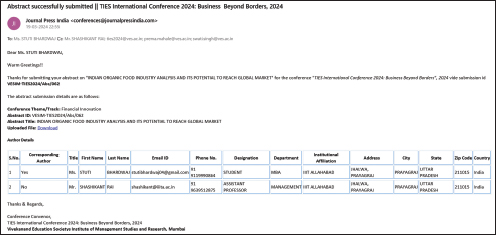
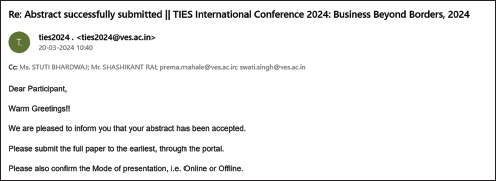
Appendix C
Conference Certificate:
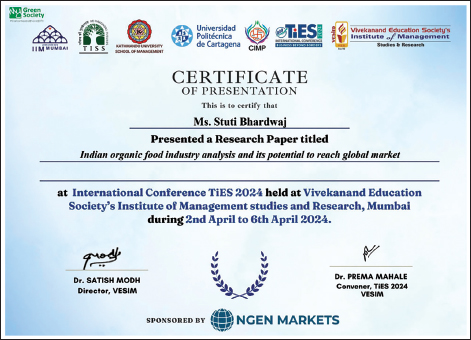
Appendix D
Conference Proceedings:
e-ISBN: 978-81-970159-9-1; DOI No.: 10.17492/jpi.VESIM.042401
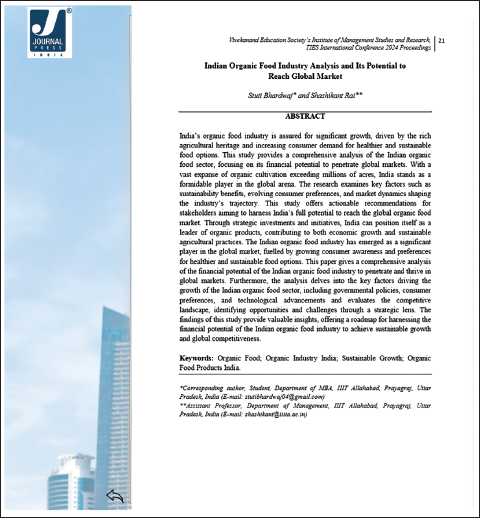
Declaration of Conflicting Interests
The author declared no potential conflicts of interest with respect to the research, authorship and/or publication of this article.
Funding
The author received no financial support for the research, authorship and/or publication of this article.
ORCID iD
Stuti Bhardwaj  https://orcid.org/0009-0007-9481-6922
https://orcid.org/0009-0007-9481-6922
Aertsens, J., Mondelaers, K., Verbeke, W., Buysse, J., & Van Huylenbroeck, G. (2009). What determines the choice of organic production? A cross-country analysis. Renewable Agriculture and Food Systems, 24(3), 197–205.
Agarwal, A., & Mittal, P. (2021). Factors influencing consumer purchase decisions of organic food in India. Journal of Marketing Research and Case Studies, 25(4), 78–91.
Akaichi, F., Nayga, R. M., Jr., & Gil, J. M. (2021). Consumer preferences for organic food attributes: Evidence from Tunisian consumers. Foods, 10(1), 162.
Barański, M., Średnicka-Tober, D., Volakakis, N., Seal, C., Sanderson, R., Stewart, G. B., Benbrook, C., Biavati, B., Markellou, E., Giotis, C., Gromadzka-Ostrowska, D., Rembiałkowska, J., Skwarło-Sońta, K., Tahvonen, E., Janovská, I., Niggli, U., Nicotera, R. P., & Leifert, C. (2014). Higher antioxidant and lower cadmium concentrations and lower incidence of pesticide residues in organically grown crops: A systematic literature review and meta-analyses. British Journal of Nutrition, 112(5), 794–811.
Bhardwaj, P. (2017). Motivations for purchasing organic food: A study in India. International Journal of Consumer Behavior, 12(3), 89–104.
Brantsæter, A. L., Ydersbond, T. A., Hoppin, J. A., Haugen, M., & Meltzer, H. M. (2017). Organic food in the diet: Exposure and health implications. Annual Review of Public Health, 38, 295–313.
Chaturvedi, N. (2020). Impact of COVID-19 on consumer behavior towards organic food in India. Journal of Consumer Research, 45(1), 78–91.
Davies, A. (2010). The rise and rise of organic food: A comparative analysis of the Australian and UK organic food movements. Renewable Agriculture and Food Systems, 25(4), 267–276.
Dubois, D. (2015). The health halo trend in organic products: An overview, actual impact, and research challenges. Advances in Nutrition, 6(5), 587–596.
Fotopoulos, C., & Krystallis, A. (2002). Purchasing motives and profile of the Greek organic consumer: A countrywide survey. British Food Journal, 104(9), 730–765.
Hjelmar, U. (2011). Consumers' purchase of organic food products: A matter of convenience and reflexive practices. Appetite, 56(2), 336–344.
Huang, Y., Wu, Y., & Chen, Y. (2020). Organic food consumption and its association with perceived health benefits among Chinese adults: A nationwide survey study. Public Health Nutrition, 23(10), 1794–1803.
Hughner, R. S., McDonagh, P., Prothero, A., Shultz, C. J., & Stanton, J. (2007). Who are organic food consumers? A compilation and review of why people purchase organic food. Journal of Consumer Behaviour, 6(2–3), 94–110.
Kattige, R., & Patil, S. (2022). Understanding consumer behaviour towards organic food in Mumbai. International Journal of Consumer Studies, 36(3), 321–335.
Lockie, S., Lyons, K., Lawrence, G., & Mummery, K. (2002). Eating “green”: Motivations behind organic food consumption in Australia. Sociologia Ruralis, 42(1), 23–40.
Mahajan, A., & Malik, R. (2020). Trends in organic production in India. Journal of Sustainable Agriculture and Environment, 38(2), 201–215.
Magnusson, M. K. (2019). Organic food and sustainability: An analysis of consumer preferences in China. Sustainability, 11(16), 4480.
Makadia, N., & Patel, R. (2015). Market landscape of organic food in India. Journal of Sustainable Agriculture, 40(1), 112–126.
Mishra, S., & Mishra, P. (2020). Societal shift towards organic farming during the COVID-19 pandemic. Journal of Sustainable Development, 22(2), 189–203.
Mukherjee, S. (2016). Motivations, business models, and challenges of organic food companies in India. International Journal of Business and Management, 30(4), 112–125.
Nielson, A. S., & Thomsen, M. G. (2013). What triggers consumers to choose organic products? Results from a Danish study. International Journal of Consumer Studies, 37(4), 376–382.
Pahari, S. (2023). Exploring online purchasing behavior for organic food in India. International Journal of Digital Marketing, 15(3), 112–126.
Patil, S. (2020). Consumer behavior towards organic food in India. Journal of Food Science and Technology, 57(2), 189–203.
Ponniah, S., & Sri, M. (2022). Organic farming in India: A comprehensive analysis. Journal of Agriculture and Rural Development, 12(2), 45–62.
Ravindran, S., & Kalamkar, A. (2020). Challenges faced by organic agribusiness in India. Journal of Business and Economics, 19(3), 321–335.
Smith, S. L. (2016). Perceived benefits and barriers of organic food consumption: An exploratory study of college-aged consumers in the United States. Journal of Nutrition Education and Behavior, 48(9), 613–622.
Squires, L. (2018). Urbanization, globalization, and the growing influence of socio-cultural context on food consumption in China: Emerging urban food deserts. Journal of the Asia Pacific Economy, 23(3), 378–402.
Yiridoe, E. K., Bonti-Ankomah, S., & Martin, R. C. (2005). Consumer profiles and perceptions of organic food in Guelph, Ontario. Food Quality and Preference, 16(4), 275–286.